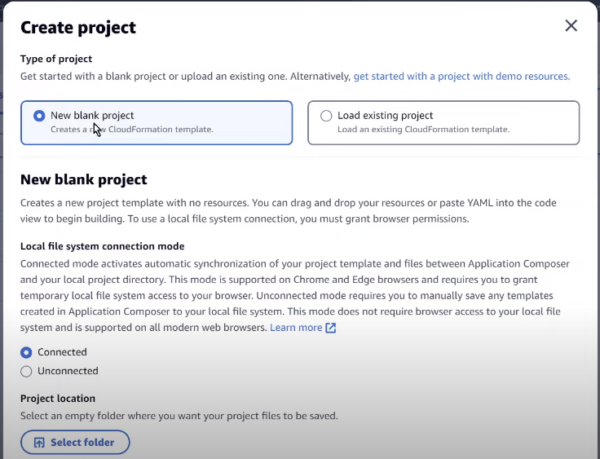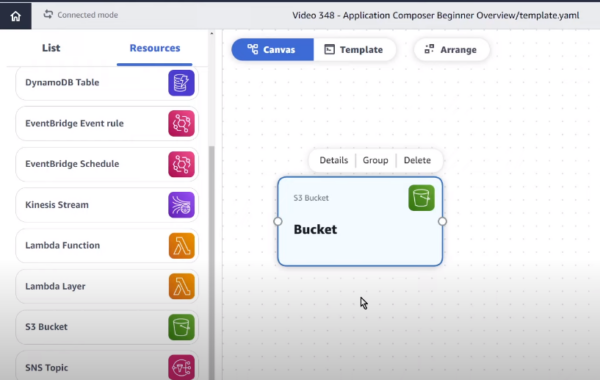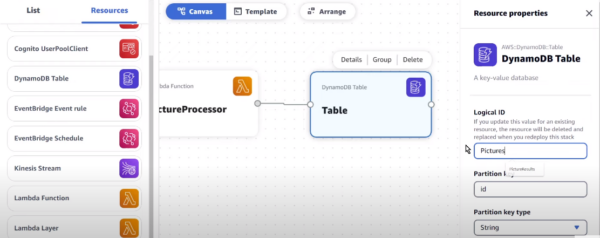AWS Application Composer is a tool that enables users to design and build serverless applications using AWS services with ease. It offers a visual interface where users can compose their application components and configure their infrastructure visually. It also generates infrastructure as code (IaC) templates that follow best practices and can be shared with the team. The tool simplifies the process of architecting, configuring, and building serverless applications, making it accessible even for developers new to serverless computing. The visual designer allows users to drag, group, and connect AWS services in a visual canvas, providing a user-friendly experience for designing application architectures.
With AWS Application Composer, users can create their application architecture, visualize their AWS CloudFormation infrastructure, and integrate with existing workflows using a drag-and-drop interface. Also, the tool allows users to define their infrastructure as code (IaC) templates, making it easier to manage and deploy serverless applications.
Features of AWS Application Composer
- Generates CloudFormation or SAM template file that you can deploy using AWS CloudFormation or even bring into your local project where you can use the CloudFormation Snippet that the application composer generates and then bring them into your project. So that you can have all the stuff in source control.
- Import CloudFormation file into Application Composer. This is great when you have an existing file.
- Connected mode is an experience in the AWS console while using the application composer in your browser. You can synchronize it with your local file system on your computer. The CloudFormation file the application composer generates will automatically sync into your project if you use something like the Lambda function.
- Free to use.
Demo for AWS Application Composer
Step 1. Open the AWS console.
Step 2. Open the Application Composer.
Step 3. Click the Create Project button.
Step 4. Select Brand New Project. Select Connected as the connection mode.

Step 5. Click on Select a folder, select a suitable one, and click the View files button on the prompt.
Step 6. Click the Create button.
Step 7. Drag and drop the component S3 Bucket from the left panel.

Step 8. Click on it from the canvas, then click the Details option to provide the necessary parameters. Click the Save button.
Step 9. Go to Templates, and there you can see the cloud formation code.
Step 10. Go back to the Canvas editor, drag and drop the Lambda function, and click on it to provide the details.
Step 11. Click the Save button.
Step 12. Drag and drop the DinamoDB table to interact with it. Then, specify the details.

Step 13. Click the Save button.
In the details of the Lambda function, you can see that it gives all the permissions to interact with the DinamoDB table like the Dinamo crud policy. You can click and arrange the components as per your needs. You can grab the template file or copy it to your clipboard. If you are using connected mode, it will automatically be synchronized with the directory. So, you can go and grab a template file, bring it into cloud formation, and create a new stack, or if you have a SAM or already a confirmation project set up in the directory you synchronize this file with your cloud.
Conclusion
AWS Application Composer simplifies the building of serverless applications by providing a visual interface, infrastructure as code (IaC) templates, and best practices, enabling users to efficiently design and build their applications while leveraging various AWS services.
Metclouds Technologies promise you to build a serverless application with AWS.


